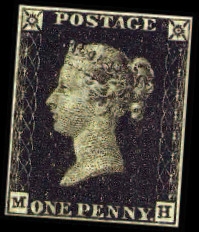Museum with the Stamp of Success
Story and photos by Lydia Aisenberg
A visit to the Postal Museum and underground Mail Rail in London takes one on a breathtaking physical and emotional journey back in time, to when letters and – in most cases dreaded – telegrams were the main means of communication and news gathering.
Living out of Britain for over 50 years, the first 30 years totally dependent on letters and light blue one-page aerogrammes from family and friends back in the U.K., this writer's appreciation of the service provided by the Royal Mail during all those computerless and phoneless years has never waned.
The Postal Museum focuses on the extraordinary story of the postal service through incredibly well-arranged, enticing exhibition halls, which walk one through the history of mail delivery from the reign of Henry VIII to modern times. The artifacts on display are not just a celebration of nostalgia, but also a chronicle of the constant development of the postal service, as methods of transportation and technology develop hugely and customer demands grow in unison.
The abandoned and almost forgotten underground rail system, known as the Mail Rail, running under the streets of London, has been lovingly restored by railway buffs, some of whom are engineers and other professionals who worked thereon until the service's closure in 2003.
A ticket to ride the 15-minute blast from the past, sitting in a somewhat cramped space, whizzes one through very narrow tunnels, with stops at stations where the already sorted sacks of mail would have been offloaded at different points, way under the City of London.
So tight is the space between tunnel walls and the tiny train, that the warning to keep your hands on your lap inside the carriage gives new meaning to the usual station warnings of 'mind the gap' – because here there is practically none. Here the station masters' mantra should be more 'mind the non-gap'.
The train stops at each station, where passengers are treated to incredible short sound and light shows, with photographs and advertising posters from throughout the postal ages projected on to the rounded walls of the tunnel. It is, however, quite an effort to take in so much of the wonderful photographs, posters of yesteryear and super informative recorded commentary at each station, before being whizzed off to the next postal time zone.
The entrance to the Mail Rail is across the road from the Postal Museum, and thankfully a well-stocked cafeteria at the museum entrance afforded a few minutes of leg unfolding and grateful reflection on the past train ride. Truly, a very special experience indeed.
Having to show one's ticket to gain entrance to the museum and having mislaid said item, I explained to the guide it must have fallen out of my pocket when getting out of the train. The kindly gentleman asked for some identification. With passport safely left at my London family's home, all I could produce was my Israeli identity card and asked if this would be acceptable.
He took a quick look, grinned and began to speak about his having volunteered in the 1970s at Kibbutz Hulda, the volunteer coordinator at that time being none other than the famous Israeli writer Amoz Oz!
Literally hundreds of fascinating artifacts are shown and shared throughout the Postal Museum's mini-maze of exhibition halls, hailing 500 years of the Royal Mail. Modes of transportation vary from the Royal Mail's penny farthing bicycles and beautiful red and black horse-drawn carriage, to the more familiar bright red postal vans of modern times.
Also on display are the uniforms worn by the postmen throughout the ages. So many variations of post boxes, telephone booths and much more - with incredibly informative texts for the amateur postal sleuths to read – all enjoyably memory jogging.
Inside a thick glass display column nestles a sheet of Penny Black, the Holy Grail of stamp collectors. Issued in Great Britain in 1840, featuring a profile of Queen Victoria, the Penny Black was the world's first adhesive postage stamp used in a public postal system and is absolutely mesmerizing.
Visiting the Mail Rail and Postal Museum was such an educational, pleasurable blast from the past and I was grateful to have been told about it by a good friend, a nowadays retired and very proud former employee of the Royal Mail.
Three hours spent at the Mail Rail and Postal Museum was just not enough, and the next London visit to do list is already stamped 'Return to Sender' for another adventure in the postal past.












Comments